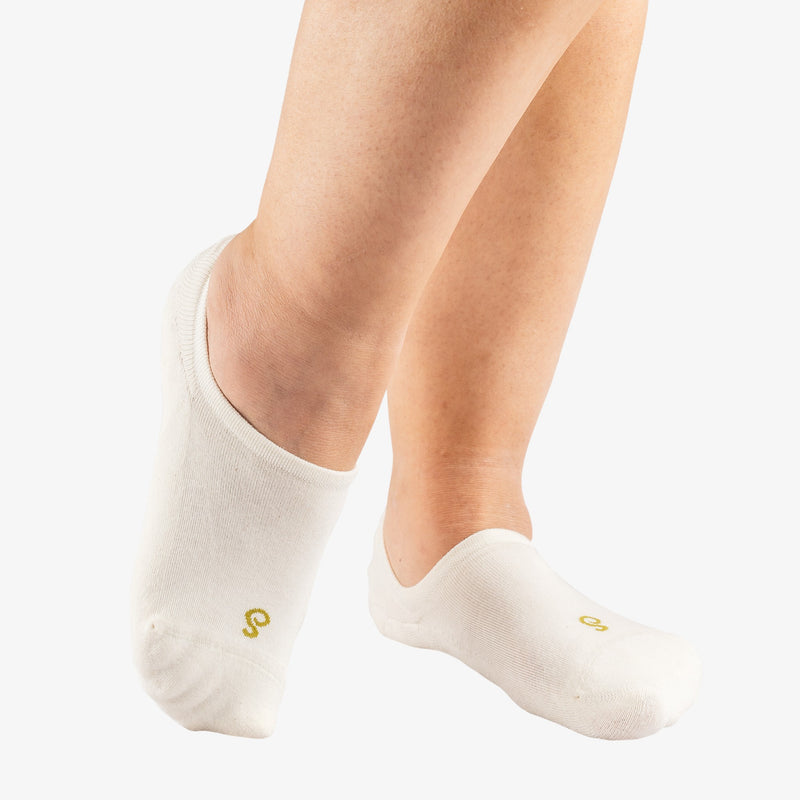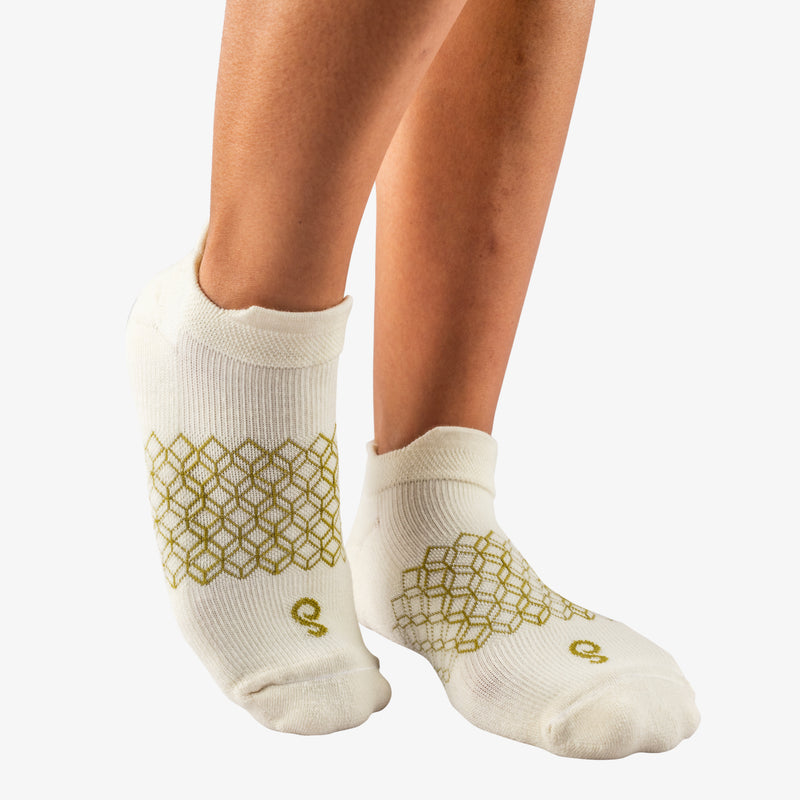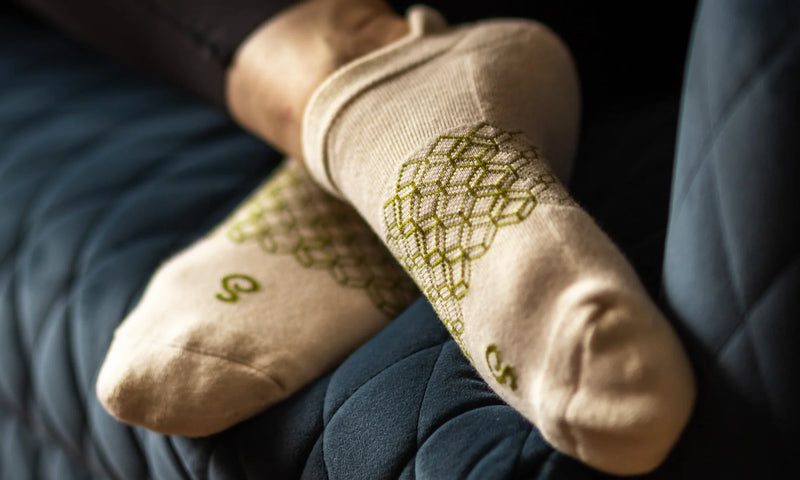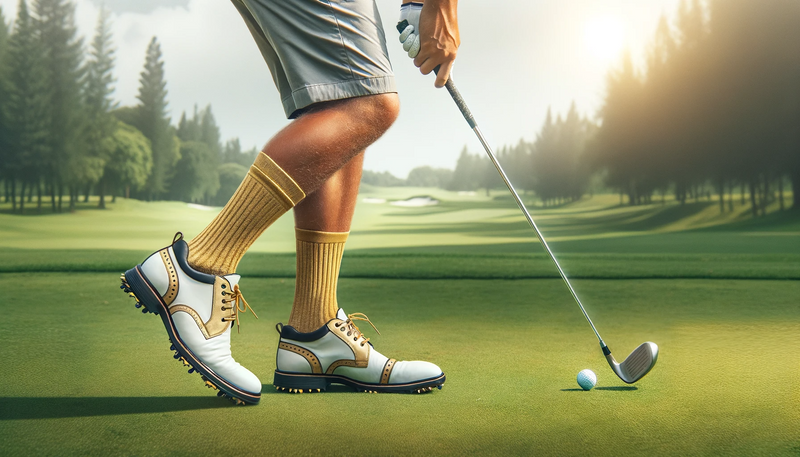
Compression socks were created to foster greater blood circulation in the legs. Compression levels are measured by mmHg, which means millimeters of mercury and it indicates the level of pressure or compression. There's mild (15-20 mmHg), moderate (20-30 mmHg), firm (30-40 mmHg) and extra firm (40-50 mmHg). Anything above 15-20 mmHg is considered medical grade. This article will discuss non-medical grade compression socks and arches.
Structurally, the compression effect is achieved by using two yarns. The first yarn is the basic yarn, and the second is plating, or the yarn that lays the weft in a bent way. With these two yarns, on certain parts of the leg, it is necessary to form a knitted fabric with different widths and amounts of elongation which will produce the desired compression on the leg. A smaller loop sinking depth means less yarn is knitted into a course resulting in a narrower knitted fabric of smaller elongation and higher compression. The increased loop sinking depth means more yarn is knitted into a course, knitted fabric width and yarn elongation are larger, which means lower compression.

Main jersey structures in the production of fine women’s and preventive compression stockings: (a) plain, (b) partially plated 1 + 1, (c) plated, and (d) basic inlaid 1 + 1 – ‘bent weft structure’ (source: Designing compression of preventive compression stockings).
Additional benefits of wearing compression socks include:
- Reduced swelling
- Decreased muscle soreness
- Improved circulation
- Decreased calf cramping
- Increased support for arches without wearing shoes
Compression socks for plantar fasciitis
Plantar fasciitis is one of the most common causes of foot pain in adults. This condition is due to an overuse injury of the sole surface (plantar) of the foot and results in inflammation of the fascia, a tough, fibrous band of tissue that connects the heel bone to the base of the toes.

Plantar fasciitis is more common in women, people who are overweight, people with occupations that require a lot of walking or standing on hard surfaces, people with flat feet, and people with high arches. Walking or running, especially with tight calf muscles, may also cause the condition.

Socks with compression arch bands are a variation of full compression socks and work by mildly increasing the pressure around the arch and soles of your feet. This helps improve blood flow and reduce swelling. The light pressure provided by compression socks through the arch of the foot provides support and can also reduce inflammation and swelling at the site of your pain.
Why hipSwan socks feature compression arch bands
While not directly designed to alleviate the pain and discomfort of plantar fasciitis, this can be a side benefit to our socks that are designed with compression bands around the arches.
After testing several prototypes (with and without compression bands) we felt that those with compression bands provided a snugger fit and enhanced the effect of our socks’ grippiness (in the case of our Flow gripper socks) and of the general level of comfort in our Dash running socks.
Examining their actual structure, you can see the difference in the density of the compression band more easily by turning the socks inside out:

hipSwan socks that feature compression arch bands:
Dash - Running Socks
learn more about hipSwan's dash running socks 👉
Roam - Ankle Socks

learn more about hipSwan's roam ankle socks 👉
Flow - Gripper Socks













